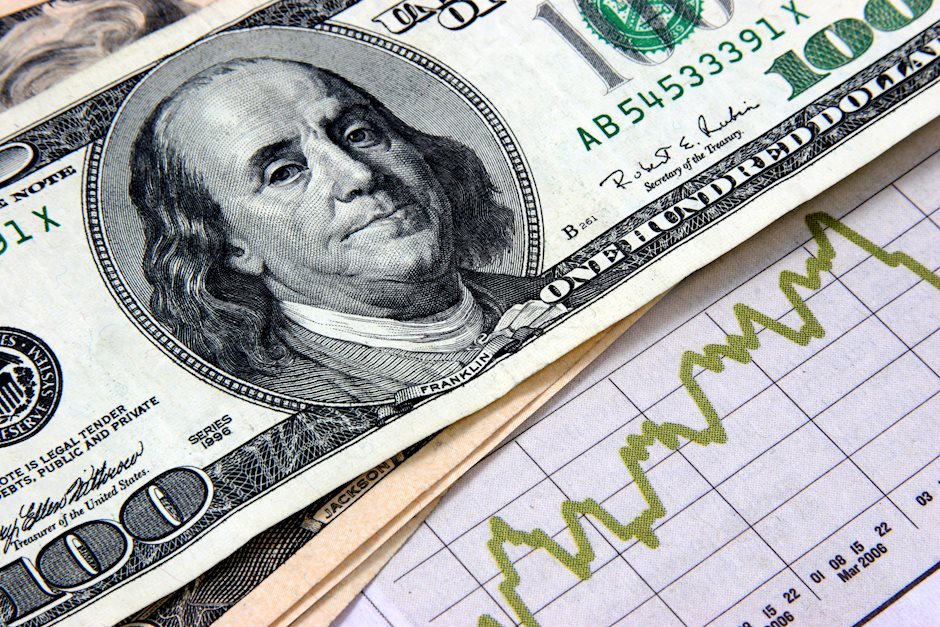US Dollar retreats with peers gaining during US holiday
- The US Dollar index (DXY) saw a bearish weekly close on Friday night.
- US markets are closed due to the Memorial Day holiday on Monday.
- The US Dollar could ease further after an important daily and weekly close on the charts.

The US Dollar (USD) trades a little softer against most major peers on Monday as there is not much to report for the Greenback, with US markets closed for the Memorial Day holidays. However, on the other side of the Atlantic Ocean, a change in stance on the European Central Bank (ECB) is starting to form.
There is a very quiet economic data calendar on Monday. Most of this week will be rather quiet, with only some soft data and US Federal Reserve (Fed) speeches ahead towards Thursday. Then, the second estimate for the Q1 US Gross Domestic Product (GDP) on Thursday and April’s US Personal Consumption Expenditures (PCE) numbers on Friday could hit markets and leave more clues on the disinflationary pathway in the US and what the Fed might do next.
Daily digest market movers: ECB vs Fed
- French ECB member François Villeroy de Galhau hinted that a second cut in July should not be excluded. This goes against the 'one and done' overall message most ECB members have been communicating.
- Traders are still looking into more details on a headline from Friday where President Vladimir Putin said to be willing to have a ceasefire and start up peace talks if current frontlines can be adhered to as new official borders.
- ECB Chief Economist Philip Lane said that an interest rate cut in June looks a given, though it might take longer for the next cut. This completely goes against the three-cut expectations from the markets, with several ECB policymakers recently saying that a June rate cut might be a ‘one and done’ for 2024.
- There is risk-on sentiment across the board, with China and Europe markets comfortably in the green.
- The CME Fedwatch Tool is pricing 99.1% for no change in the policy rate for June. September futures are seeing more action, where it is a neck-and-neck race with 50.2% chances for keeping rates unchanged against 44.9% chances for a 25 basic points (bps) rate cut and 4.5% chances for even 50 bps rate cut. A marginal 0.5% price in an interest rate hike.
- The benchmark 10-year US Treasury Note trades around 4.46% and is not moving on Monday with the US bank holiday.
US Dollar Index Technical Analysis: Something is brewing
The US Dollar Index (DXY) faces a bit of a horror story on the technical front after its weekly close on Friday. First of all, on the weekly chart, the DXY closed below the 100-week Simple Moving Average (SMA), which is a severe bearish signal and could point to a further downturn. A similar picture is seen on the daily chart, where the DXY was unable to stay afloat above the 55-day SMA at 104.86 and gave up its gains for the week above 105.00.
On the upside, the DXY index needs to reclaim those levels it lost last week: the 55-day Simple Moving Average (SMA) at 104.86 and the 105.00 big round level. Further up, the following levels to consider are 105.12 and 105.52.
On the downside, the 200-day SMA at 104.40 and the 100-day SMA around 104.30 are the last line of defence. Once that level snaps, an air pocket is placed between 104.30 and 103.00. Should the US Dollar decline persist, the low of March at 102.35 and the low from December at 100.62 are levels to consider.
ECB FAQs
The European Central Bank (ECB) in Frankfurt, Germany, is the reserve bank for the Eurozone. The ECB sets interest rates and manages monetary policy for the region. The ECB primary mandate is to maintain price stability, which means keeping inflation at around 2%. Its primary tool for achieving this is by raising or lowering interest rates. Relatively high interest rates will usually result in a stronger Euro and vice versa. The ECB Governing Council makes monetary policy decisions at meetings held eight times a year. Decisions are made by heads of the Eurozone national banks and six permanent members, including the President of the ECB, Christine Lagarde.
In extreme situations, the European Central Bank can enact a policy tool called Quantitative Easing. QE is the process by which the ECB prints Euros and uses them to buy assets – usually government or corporate bonds – from banks and other financial institutions. QE usually results in a weaker Euro. QE is a last resort when simply lowering interest rates is unlikely to achieve the objective of price stability. The ECB used it during the Great Financial Crisis in 2009-11, in 2015 when inflation remained stubbornly low, as well as during the covid pandemic.
Quantitative tightening (QT) is the reverse of QE. It is undertaken after QE when an economic recovery is underway and inflation starts rising. Whilst in QE the European Central Bank (ECB) purchases government and corporate bonds from financial institutions to provide them with liquidity, in QT the ECB stops buying more bonds, and stops reinvesting the principal maturing on the bonds it already holds. It is usually positive (or bullish) for the Euro.
Author

Filip Lagaart
FXStreet
Filip Lagaart is a former sales/trader with over 15 years of financial markets expertise under its belt.
















